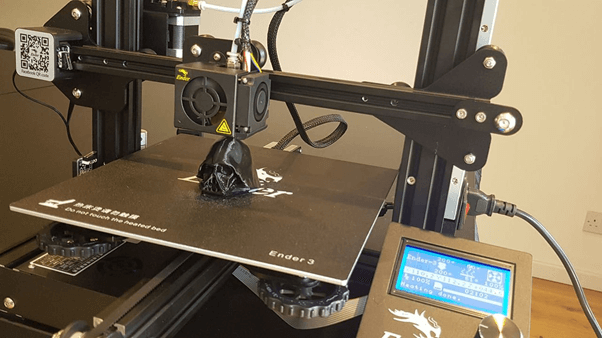So, you are on the market for a new 3D printer, and you have narrowed your choice to two of Creality’s 3D printers – the Ender 3 and Ender 5. However, you can’t make your mind which one to buy. Here we will compare the main features of the two 3D printers so that it will be easier to decide which one to choose.
But before we start looking at their main differences, we should take some time and consider their common features:
- Both use the same FDM technology.
- They use the same type of 1.75 mm filament (PLA, TPU, and ABS).
- Both 3D printers come with an LCD screen.
- They use the same 0.4 mm nozzle.
- Minimum layer height +/- 0.1 mm
- Maximum printing speed 200 mm/s
- Identical heated bed
- In terms of connectivity, they can take an SD card or USB.
So it’s more than obvious they share a lot of common features. Now the question is, why should we pay from $50 to $100 for the Ender 5, and why not stick with the cheaper Ender 3?
Well, to get there, we also need to explain the differences between the two 3D printers. Here it is, Ender 3 VS Ender 5 – their main differences.
Differences between Ender 3 and Ender 5
Print volume
Ender 3 has a 220 x 220 x 250 print volume, while the Ender 5 has a 220 x 220 x 300 print volume. That’s 50 mm more in the Y dimension.
Hot end
The Ender 5 comes with a Creality MK 10 hot end, while the Ender 3 features Creality MK 8.

Assembly process
It sounds too good to be true, but the Ender 5 can be assembled for 20 to 30 minutes, while the Ender 3 can be assembled in three to four hours before being able to print anything.
Firmware
One of the biggest drawbacks of Ender 5 is that it doesn’t have any thermal runaway protection. The issue has been solved with the newer Ender 3s model in which the protection can stop the machine in less than 20 seconds after an issue with the temperature is noticed.
Electronics
The Ender 5 features a v1.1.3 mainboard, while the Ender 3 comes with a v1.1.4 mainboard.
Ender 3 comes with a generic power supply, which is somewhat of a fire risk, while Ender 5 has a certified Meanwell power supply.
The verdict
In a head to head comparison, Ender 5 is the clear winner as it can provide bigger prints, offers a better power supply, and much faster assembly. The print quality is also increased.
On the other hand, Ender 3 has better firmware and a lower price point. Then there is the fact that Ender 3 has the support of a massive community from all over the world. So, if you ever got stuck with something, there is an army of people that can help you out.
So, if you are searching for a reliable machine that can be easily put to work, Ender 5 should be your choice. But if you are into tinkering, then you should go for the Ender 3.

